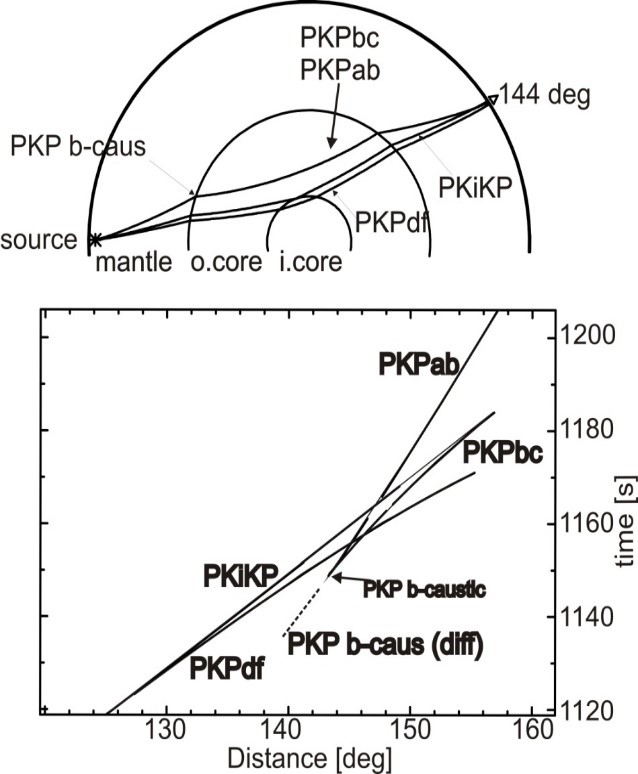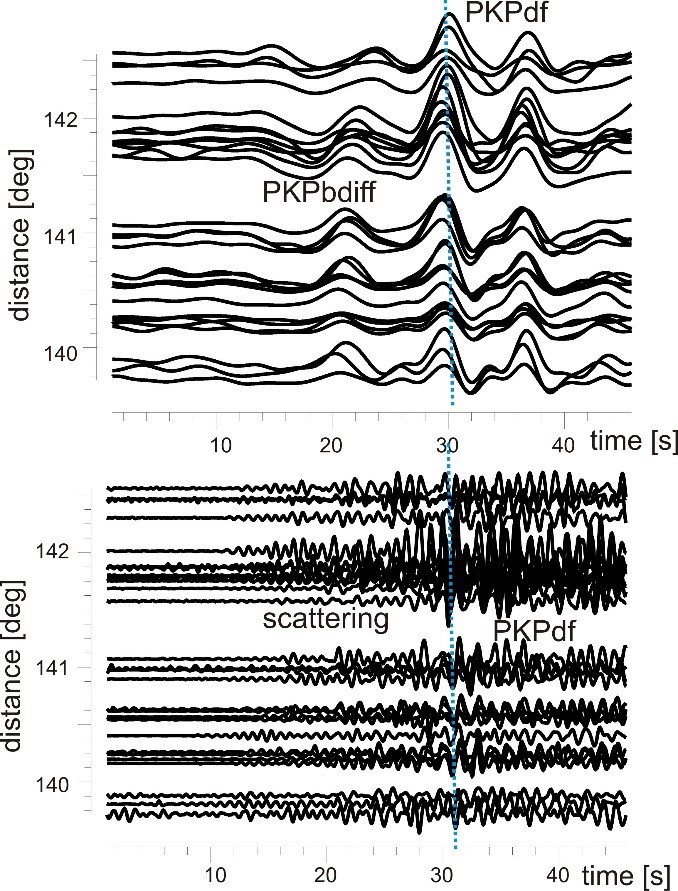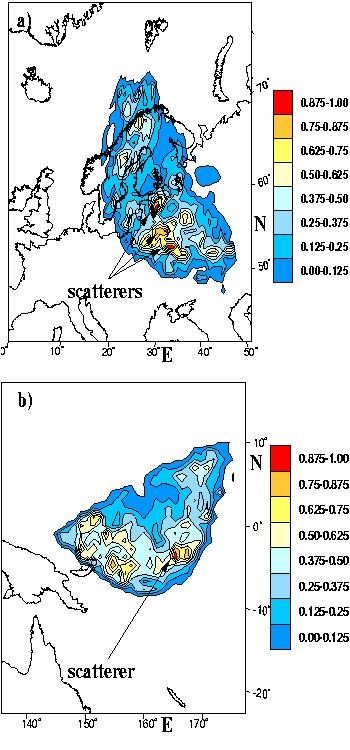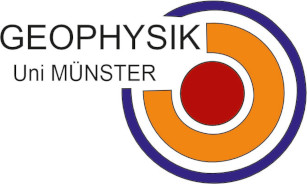Scattering in the deep mantle
Even though the resolution of tomographic studies increases there is a fundamental limit below which structure cannot imaged with tomographic inversions. Especially small-scale heterogeneities can influence the seismic wave field and contribute to the attenuation of seismic waves. Moreover, these small-scale inhomogeneities provide information on dynamic processes and mantle mixing and may be related amongst others to microstructures, melt pockets, or topography of boundary layers.
While scattering in the crust and from shallow structures manifests itself as coda to seismic waves and crustal scattering may overprint scattering from deeper layers, one region in the Earth can be investigates without crustal influence of scattering: precursors to the core phases such as PKPdf. Since the scattered waves travel along different paths, their travel time is such that they arrive as precursors to PKPdf.

PKP precursors have been observed and investigates for a number of years with a first peak in the 1970s there is still considerable uncertainty where exactly the scattering takes place: scattering in the lower (or entire) mantle versus scattering near the core-mantle boundary are discussed. It seems, however, that scattering is observed in many regions (see Mancinelli et al., 2016, Waszek et al., 2015) and also shows some variation in amplitude, which could be due to either scattering strength itself or due to the influence of inner core attenuation on the reference phase (Waszek et al., 2015).

In Münster we also investigate scattering using seismic arrays to overcome source-receiver ambiguity of scattering location, to test the strength of scattering and to identify structure in the mantle that could cause the observed precursors, also in PKP waves.

Furthermore, we find that in some cases the PKPbdiff wave (which arrives in a similar time window as PKP precursors), can provide information on the structure in the lowermost mantle. The amplitude of these waves varies considerably for events from Tonga Fiji region recorded in Ethiopia and Germany and the most likely interpretation for this phenomenon is a wave guide effect due to a ultra-low velocity zone-like structure, that is localised near the east coast of Australia. This zone may have internal convection (or other small-scale inhomogeneities), since we also observed PKP precursor waves for these events.

In a recent study (Hiemer and Thomas, 2022, 2023), we tested the hypothesis, that a regions with random scattering can generate PKP precursors as well as PdP-like waves (i.e., reflections off the D" layer). It turns out that this is indeed the case, we record PdP-like waves between P and PcP, with slowness and travel times that would allow the interpretation of a D" reflection. In a parameter study (Hiemer and Thomas, 2023) we tried to see whether it is possible to narrow down the scattering parameters of the layer by using the combination of two waves that have different incidence angles, path and usually also different frequencies. We find that a scattering layer produces more than one arrival between P and PcP (which could be interpretetd as interal layering or a number of phase transitions when not invoking scattering) but the PdP-like waveform is generally less focussed with more energy arriving with different slowness avlues and times. For PKP precursors we find that amplitudes and arrival times are influenced by almost all scattering parameters, but mostly by the correlation length and rms velocity contrast (similar to previous work).

